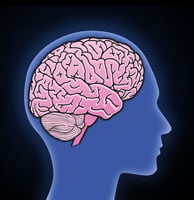Glucocorticoids increase the risk of suicidal behavior and neuropsychiatric disorders. Researchers...
New Model Found Useful for Predicting Alcohol Use in Youth
 |
“Previous findings have suggested that a mix of social, psychological, and biological mechanisms contribute to alcohol use during adolescence,” wrote the study authors, a team a behavioral scientists and psychiatric researchers. Neuropsychological and neuroimaging data may provide quantification of underlying behavioral mechanisms of risk for substance use and better help identify at-risk adolescent before they initiate such use.
The study involved 137 substance-naïve adolescents aged 12 to 14. Participants' demographic information was obtained at baseline through interview. Neuropsychological testing at baseline was administered to evaluate the neurocognitive function; structural magnetic resonance imaging (sMRI) and functional magnetic resonance imaging (fMRI) were used to assess brain structure. Information on participants' substance use, assessed by the Customary Drinking and Drug Use Record, was updated every six months by telephone interview until the end of the study.
The results showed that by age 18, 70 adolescents (51%) initiated moderate to heavy alcohol use, and 67 remained nonusers. The combined data model was found to be 74% accurate in predicting such outcomes. In comparison, the demographic model had an accuracy rate of 62%, and the demographic and neuropsychological model, 69%.
In addition, the study identified 34 predictors that contributed to alcohol use by age 18, including being male, higher socioeconomic status, early dating, more externalizing behaviors, worse executive functioning, and thinner cortices, and less brain activation in diffusely distributed regions of the brain.
"The results provide evidence that multimodal neuroimaging data, as well as neuropsychological testing, can be used to generate predictions of future behaviors with [possibly] significantly better accuracy than demographic information alone," the authors wrote. "Understanding neurocognitive factors that predate substance use initiation is crucial to specifying the consequences of substance use on brain development, as well as identifying at-risk youths and potential targets of preventive efforts."
(iStock.com/JTobiasonPhoto)





